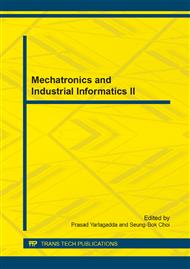p.468
p.472
p.476
p.480
p.484
p.490
p.494
p.498
p.505
Change Detection in SAR Images Based on Semi-Supervised Learning
Abstract:
Support Vector Machine (SVM) is a supervised approach, which needs large numbers of labeled samples. However, it is difficult to obtain such samples for change detection based on SAR images and the available labeled samples are very limited. this paper proposes a semi-supervised support vector machine (S3VM) unsupervised SAR image change detection. Using of K-means clustering method obtain threshold of image; introduce offsets which are automatically selected to achieve a pseudo-training set and unlabeled set; Finally, based on the statistical characteristics of semi-supervised support vector machines for image change and non-change class. The experimental results showed that: In the case without using noise reduction and the reduction in the number of samples, the proposed algorithm can maintain better classification, generalization and more stable detection accuracy.
Info:
Periodical:
Pages:
484-489
Citation:
Online since:
July 2014
Authors:
Price:
Сopyright:
© 2014 Trans Tech Publications Ltd. All Rights Reserved
Share:
Citation:


